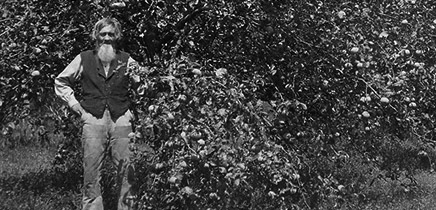The United States has always been known as the “melting pot”, with good reason. Minnesota and Carver County are no strangers to this term either. Immigrants made Minnesota and Carver County what they are today. The first peoples who lived in this area were Dakota and Ojibwe American Indian groups, until the treaty period began in earnest. Then, immigrants flooded in, first from Eastern states, and later from Western Europe.
From 1850 to 1900, Minnesota’s population boomed from fewer than 6,100 people to 1.75 million. Over the years, Minnesota has been a destination of choice for Germans, Norwegians and Swedes, for the similar climates and good farmland. Other groups that came in smaller but still large numbers were the Irish, Czechs, Russians, Ukrainians, Polish, Finnish, and Italians. They were fleeing war, famine, land inheritance practices, and disease, or simply looking for more opportunity and a better future.
The official election paperwork for 1896 attests to this growing diversity, being printed in nine languages in all: English, German, Norwegian, Swedish, Finnish, French, Czech, Italian and Polish. In Carver County, this diversity can be seen in the community places names that linger to this day and the ghost towns of old: Gotha, Swede Lake, Hamburg, Helvetia, Scandia, Cologne, Dahlgren, and Schnappsburg. In the 2000 U.S. Census, 4 million Americans claimed Swedish ancestry, with Minnesota having the most inhabitants of Swedish descent at 9.6% of the 2005 population. Also according to the 2000 census, 44.3% of Carver County citizens claim German heritage (largest percentage in any MN county) and in MN as a whole, 37.9% of citizens claim German heritage (largest of any of the 50 states).
In the twenty-first century, the countries of emigration have shifted. No longer from Western Europe, most today are from Asian-speaking, Spanish-speaking, and African countries. In 2011, 389,000 Minnesotans were foreign-born, with 179,000 U.S. born children with at least one foreign-born parent. These groups have spread across Minnesota, but nearly 80% still live in the 7-county metro area: Washington, Ramsey, Anoka, Hennepin, Carver, Scott and Dakota. Many of today’s immigrants are fleeing persecution, war, genocide and disease. They hail from Mexico, Laos, India, Somalia, Vietnam, Ethiopia, Korea, Liberia, China, Thailand, Yugoslavia, Tibet, Kenya, the Philippines, Cambodia, Sudan, Bosnia, Eritrea, Brazil and the former Soviet Union. Ethnic and cultural groups include the Hmong, Tibetans, Buddhists, Oromo and Karen.
As one of the coldest states, with harsh winters, why would many of these immigrants and refugees choose Minnesota and Carver County? Many come to join family, or for our strong economy with companies like Target and 3M. They come for the quality of life and educational opportunities. For some, they seek the high end research and medical positions. For others, it is the chances for unskilled work not requiring English proficiency. Minnesota also has a history and reputation of active volunteerism regarding immigration and refugee resettlement. There is the University of Minnesota’s Immigration History Research Center, the International Institute of Minnesota, the Minnesota Council of Churches: Refugee Services, World Relief Minnesota, and many more.
In the twenty-first century, between 2000 and 2005, Minnesota’s African population grew by 23.89%, the Asian population by 21.43% and the Latino/Hispanic population between 30-50%. Each year, anywhere from 25-50% of Minnesota immigrants are refugees, compared to 8% for the U.S. as a whole.
In Minneapolis Public Schools, as of 2012, more than 90 different languages are spoken. That number is rising in Carver County, according to the 2030 Comprehensive Plan. In Carver County’s largest district, Eastern Carver County Schools #112, 41 languages are spoken with 11% of students speaking a language other than English at home. Minnesota and Carver County continue to grow and change as a “melting pot” and remain a destination of choice for many.
Carver County website. Carver County 2030 Comprehensive Plan. Accessed August 13, 2014. http://www.co.carver.mn.us/departments/LWS/docs/01_02_Intro_100427.pdf
The Advocates for Human Rights. “The Facts: Immigration in Minnesota.” Pamphlet. Accessed August 13, 2014. http://www.energyofanation.org/sites/25e1f498-741c-478a-8a08-aa486d8533a5/uploads/immigration_in_minnesota.pdf
The Minneapolis Foundation. Immigration in Minnesota: Discovering Common Ground. Brochure. October, 2004.
United States Census Bureau website. American Fact Finder: 2000 Census. Accessed August 13, 2014. http://factfinder2.census.gov/faces/nav/jsf/pages/community_facts.xhtml
Secondary:
Gunderson, Tom. “They Came to Minnesota.” Minnesota Public Radio (MPR), May 3, 1999. http://news.minnesota.publicradio.org/features/199905/03_gundersond_refugees-m/?refid=0
Minnesota Historical Society website. “Becoming Minnesotan: Stories of Recent Immigrants and Refugees.” Accessed August 13, 2014. http://education.mnhs.org/immigration/
University of Minnesota IHRC website. “Immigration History Research Center and Archives.” Accessed August 13, 2014. http://www.ihrc.umn.edu/


